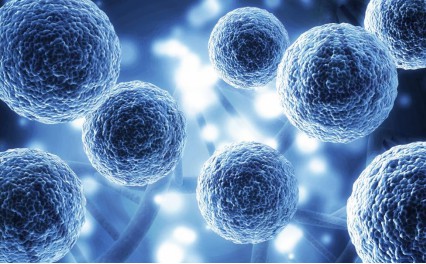* This product is for research use only. Not intended for use in the treatment or diagnosis of disease.
Cell transfection is a technique for introducing exogenous molecules such as DNA or RNA into eukaryotic cells.
Depending on how long a gene is expressed in the cell or how the gene is integrated into the cell, cell transfection can be classified as transient or stable transfection.
Transient transfection refers to the introduction of a constructed plasmid into a cell by transfection reagents through liposomes, calcium phosphate, electroporation, etc. The exogenous genes on this plasmid are not integrated into the cell's genome.
As the cell grows and divides, the exogenous genes are gradually lost. The plasmid is able to remain in the cell for 3-4 days, during which time the plasmid exogenous gene is transcribed and translated within the cell, resulting in a very small amount of protein.
Stable transfection usually refers to the use of a viral vector to integrate an exogenous gene into the cell genome and to obtain a stable cell line through screening so that the exogenous gene becomes part of the cell genome and can be replicated and a gene can be expressed for a long time.
The advantages and disadvantages of the two methods are compared as follows.
| Method | Advantages | Disadvantages |
|---|---|---|
| Transient transfection | Rapid production, short cycle, low cost, high expression efficiency, no need to screen genes. | Can not express genes for a long time, and the expression efficiency is low for some difficult-to-transfect cells. |
| Stable transfection | It can be expressed for a long time, and the cost is reduced after obtaining a stable transfection, and it is suitable for difficult-to-transfect cells. | High cost, long cycle and many operation steps. |
Cell recognition is the recognition by cells of homologous or heterologous cells. There are three types of recognition systems in multicellular biological organisms: antigen-antibody recognition, enzyme-substrate recognition, and intercellular recognition. The third category includes signaling through the selective interaction of cell surface receptors or ligands with other cell surface ligands or receptors, leading to a range of physiological and biochemical reactions. The basic characteristic common to all of these recognition systems is that they are selective, or specific.
Cell recognition is a very important part of cell development and differentiation. Cells form different types of tissues through recognition and adhesion. Since the functions of different tissues are different, recognition itself means selection.
Cell recognition is the recognition and identification of one biological cell from another biological cell. For example, pathogenic cells of plants and animals recognize their host cells, and only if they can do so can they infest and cause disease.

| Products | Description |
|---|---|
| DNA Transfection Kits | Our products can safely and effectively deliver plasmid DNA and virus DNA into mammalian cells, so that you can get more reliable results in your studies. |
| In Vivo Transfection Reagent | High efficiency, low toxicity transfection reagent for DNA, siRNA, mRNA, and other oligonucleotides. |
| Protein Transfection Kits | Used to directly transfect the protein itself into mammalian cells, instead of transfecting DNA or mRNA encoding the protein of interest. |
| Cell Line Transfection Kits | BOC Sciences provides a variety of validated cell line transfection reagents for the field of life science research to meet the transfection requirements of different types of cell lines. |
| RNA Transfection Kits | BOC Sciences provides proven various types of RNA transfection reagents for life science research to meet different transfection requirements. |
| Electroporation Products | Electroporation, as an increasingly popular physical transfection method, uses high voltage to introduce exogenous nucleic acids into many types of cells (including bacteria and mammalian cells). |